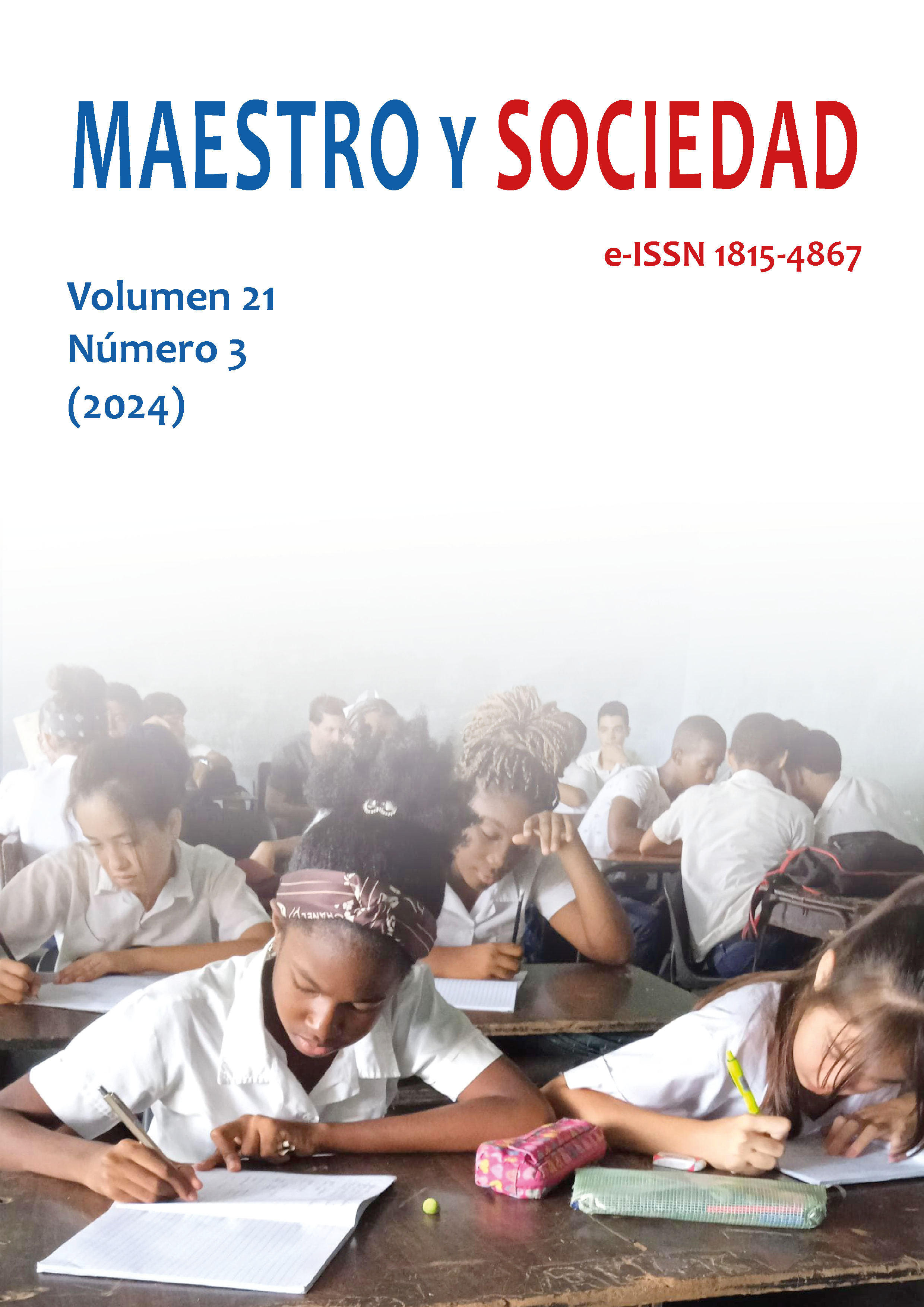Inglés Problem solving in the balance of the theory-practice relationship and its impact on Technical baccalaureate Computer Science learning
Keywords:
practical theory, problem solving, technical trainingAbstract
Introduction: The study addresses the relationship between theory and practice in technical skills learning, highlighting its importance in technical education and how problem-solving strategy emerges as a crucial element to balance theoretical knowledge with its practical application. It is argued that this relationship is fundamental for the effective development of competencies in technical training students, especially in technology-oriented educational environments. Materials and methods: It is based on educational theories by authors such as Lev Vygotsky, John Dewey, and Priede, highlighting the intersection between pedagogical strategy and the educational process. The methodology combines qualitative and quantitative approaches, with an emphasis on action research in the classroom. Document analysis, interviews, and pedagogical tests are carried out to understand how problem-solving influences the integration of theory and practice. Results: It highlights the importance of comprehensive teaching that not only focuses on the transmission of theoretical knowledge, but also encourages the practical application of this knowledge in real-world situations. Discussion: The design of the problem-solving strategy favors the balance between theory and practice, thus improving the teaching-learning process in technical training. Conclusions: In addition, the importance of continuing to explore this relationship is underlined in order to better understand how these strategies can improve technical education, especially in the Ecuadorian context.
References
Alvarez, V. G. (2018). Revista de Pedagogía. https://revistadepedagogia.org/wp-content/uploads/2018/04/2-El-Problema-de-la-Relaci%C3%B3n-entre-Teor%C3%ADa.pdf
Coll, C. (1993). El Constructivismo en el Aula. Editorial Graó. Barcelona
Kerlinger, F. N. (1989). Investigación del Comportamiento México : Mcgraw-Hill.
Kolb, A., & Kolb, D. (2009). learningfromexperience. https://learningfromexperience.com/index.html
Lobato, J. (2006). Alternative perspectives on the transfer of learning: History, issues, and challenges for future research. The Journal of the Learning Sciences, 15(4), 431-449.
Lobato, J. (2012). The Actor-Oriented transfer perspective and its contributions to educational research and practice. Educational Psychologist, 47(3), 232-247. doi:10.1080/00461520.2012.693353
MacIntyre, A. (1984). After virtue. EUA: University of Notre Dame.
Murtiyasa, B., Indraswari, I., & Karomah, A. (2020). The Impact of Learning Strategy of Problem Solving and Discovery towards Learning Outcomes Reviewed from Students Learning Motivation. Universal Journal of Educational Research, 8(9), 4105–4112. https://doi.org/10.13189/ujer.2020.080936
Novak, J. (1990). Teoría y Práctica de la Educación. Alianza Universidad.
Prasetya, A., Prasetya, A., -, K., & Widodo, A. (2013). MODEL IDEAL PROBLEM SOLVING UNTUK PENCAPAIAN KEMAMPUAN PEMECAHAN MASALAH DI KELAS OLIMPIADE. Lembaran Ilmu Kependidikan, 41(1). https://doi.org/10.15294/lik.v41i1.2222
Reglamento General a la Ley Orgánica De Educación Intercultural. (18 de Febrero de 2023). www.fielweb.com/App_Themes/InformacionInteres/dct675.pdf
Smart, K., & Csapo, N. (2007). Learning by doing: Engaging students through learner-centered activities. Business Communication Quarterly, 70(4), 451-457.
Suastika, K. (2017). Mathematics Learning Model of Open Problem Solving to Develop Students’ Creativity. International Electronic Journal of Mathematics Education, 12(3), 569–577. doi: https://doi.org/10.29333/IEJME/633
UNE. (2022). Over Fifty Problem-Solving Strategies Explained. https://blog.une.edu.au/usingpsychology/2018/10/15/over-fifty-problem-solving-strategies-explained/
Wagensberg, J. (1989). Ideas Sobre la Complejidad del Mundo. Tusquets.
Wigger, L. (1983). Handlung und Erziehung: Eine kritische Analyse von Handlungsbegriffen in Erziehungstheorien. Handlungstheorie und Piidagogik.
Zulyadaini, M. (2017). Effects of Creative Problem Solving Learning Model on Mathematical Problem Solving Skills of Senior High School Students. 7(3), 33-37.
Published
How to Cite
Issue
Section
License
Copyright (c) 2024 Fabián Josue Bravo Meza , Cristhian Luis Manzaba Villegas, Raul Alejandro Montes de Oca Celerio, Odette Martínez Pérez

This work is licensed under a Creative Commons Attribution-NonCommercial-NoDerivatives 4.0 International License.
This journal provides immediate open access to its content, based on the principle that offering the public free access to research helps a greater global exchange of knowledge. Each author is responsible for the content of each of their articles.



























 Universidad de Oriente
Universidad de Oriente 